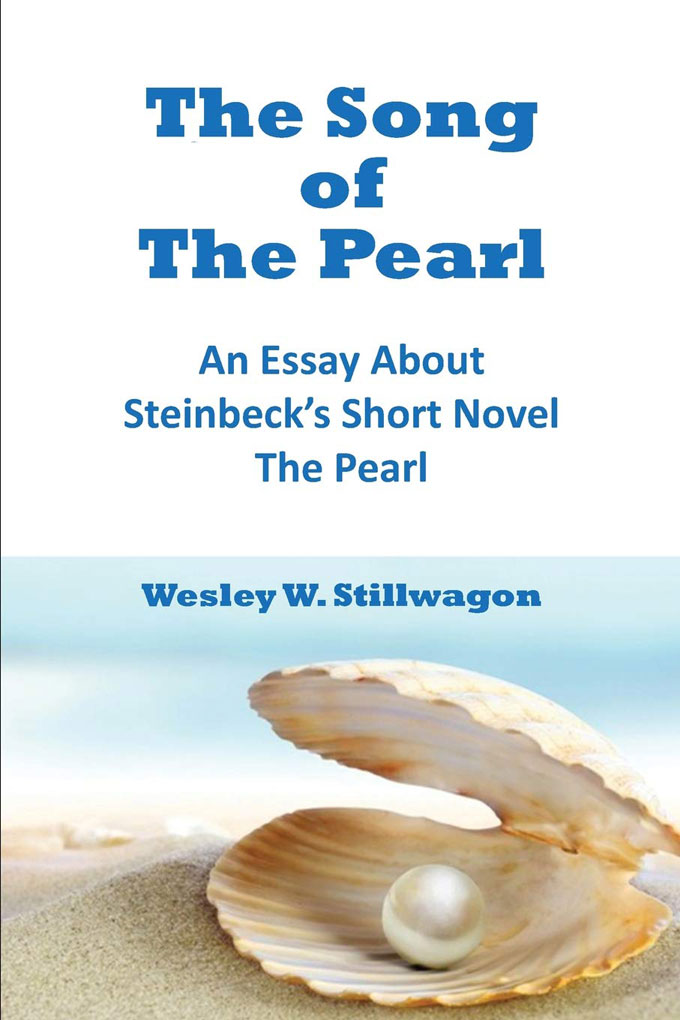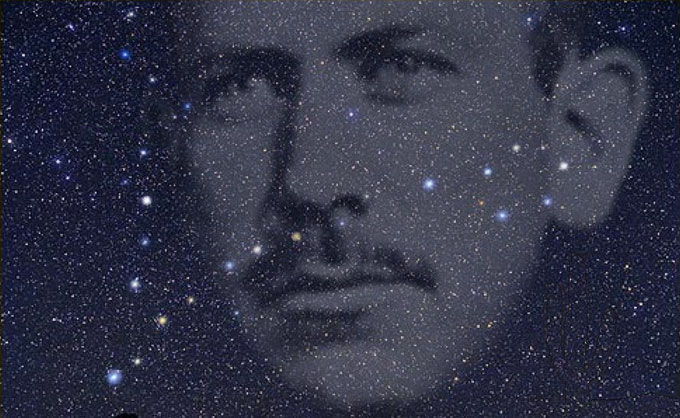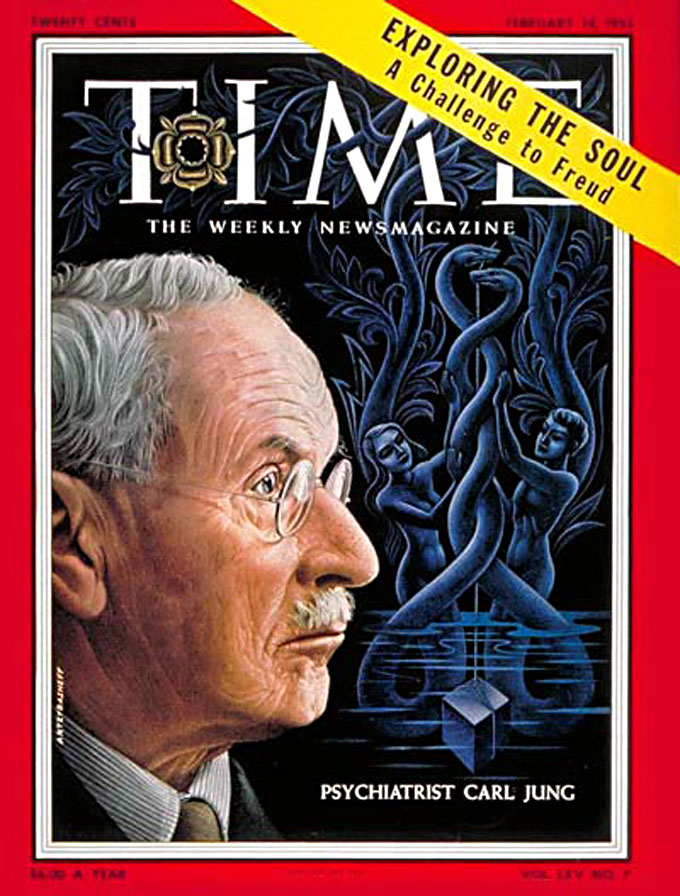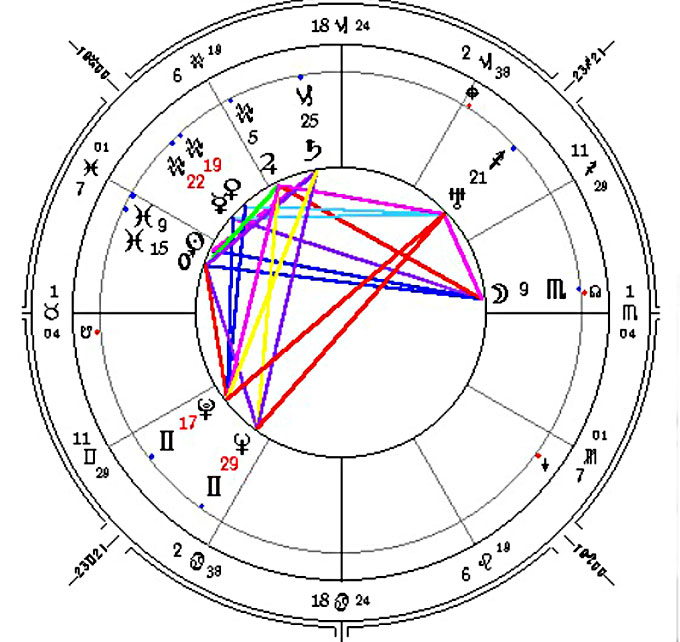I was recently asked to consider writing an essay about Steinbeck’s short novel The Pearl to be included in a text series for secondary and undergraduate English education. Frankly The Pearl wasn’t one of my favorite Steinbeck books, and I couldn’t imagine I would be able to come up with 20 pages on the short novel. But the more I reread it, the more the subject of the Song of the Pearl kept nudging my interest. I became curious about Steinbeck’s specifying a “song” as opposed to a musical note, chord, or phrase. I knew he was interested in classical music, and I believed his choice of the word “song” was important to the story. But the publisher’s formatting specifications were overwhelming and I couldn’t decide how to reduce the content to fit within the length requirements, so I decided to publish it elsewhere. I believe doing so is important to my personal mission to support the practical and scientific psychology of Carl Jung and William James as it was deftly applied by John Steinbeck in his fiction and non-fiction. The Song of the Pearl is about personal styles, levels of maturity, attitudes, and how such things influence individual perception, judgment, decision-making, problem-solving, and social bodies like the small indigenous coastal village of the central character in the novel.
Carl Jung’s Psychology and John Steinbeck’s Horoscope
If you keep an open mind about astrology, as I’ve done in my investigation and application of its principles, you can learn quite a bit about John Steinbeck from his horoscope wheel. I know: reading astrology charts seems unusual for an electronic technician like me. Frankly, I was skeptical about the subject when I started—until I read the works Carl Jung and followers of the pioneering Swiss psychologist who fell out with his former mentor, Sigmund Freud. Steinbeck, who distinctly disliked Freud’s ideas about human sexuality and neurosis, was deeply attracted to Jung’s insights into human consciousness and imagination. Jung’s influence on Steinbeck is particularly compelling in Sea of Cortez, the record of Steinbeck’s expedition to Baja, California with Ed Ricketts 75 years ago.
John Steinbeck, who distinctly disliked Sigmund Freud’s ideas about human sexuality and neurosis, was deeply attracted to Carl Jung’s insights into human consciousness and imagination.
Steinbeck may have encountered Jung’s writing as early as 1922 while a student at Stanford, where he read philosophy and psychology along with other subjects that appealed to his needs as a writer. By the time he met Ed Ricketts and Joseph Campbell 10 years later, Jung had attracted the attention of these important figures in Steinbeck’s life as well. Sea of Cortez, written with Ricketts in 1941, bursts with Jungian ideas—such as the closely related concepts of synchronicity, acausality, and non-teleology—that get almost as much space as the ecology of the marine invertebrates and the culture of the people that Ricketts and Steinbeck observed along the way.
Carl Jung, Synchronicity, and Astrology Charts
I began my study of Carl Jung in 1965 and, three years later, astrology as part of a college assignment in which I intended to disprove astrology’s scientific validity. In my profession as an electronic technician at RCA’s Astro Electronic Division, I investigated further, mostly out of curiosity, but also out of respect for Jung’s rigorous empiricism. As a physician trained in the German tradition, he insisted on assembling evidence before expounding theory when he wrote about the personality, the unconscious, and the possibility that astrology had scientific value after all.
Jung insisted on assembling evidence before expounding theory when he wrote about the personality, the unconscious, and the possibility that astrology had scientific value after all.
I was three years into my study of Jung when I read “Synchronicity: An Acausal Connecting Principle,” where he endorses astrology as a tool in treating psychiatric patients. To be honest, the notion angered me so much I stopped reading his work until I renewed my research on astrology in an attempt to demonstrate, scientifically, why it really wasn’t worth the time. My method was simple: do as many horoscope readings as possible, then compare astrology chart results with what I learned from interviewing the individuals I had charted. I did dozens of charts and interviews and found much to discount and dismiss. But I also turned up evidence that, to my surprise, supported Jung’s claims about astrology.
I did dozens of charts and interviews and found much to discount and dismiss. But I also turned up evidence that, to my surprise, supported Jung’s claims about astrology.
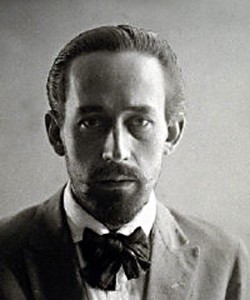 During the same period I encountered the works of Dane Rudhyar, a long-lived and multi-talented follower of Carl Jung, born in Paris, who composed modernist music, practiced a form of humanistic astrology, and died in San Francisco in 1985. Discovering Rudhyar was a watershed moment in my study of Jung and astrology, and Rudhyar’s writing still influences me in my thinking and practice today. By reading Rudhyar, Marc Edmund Jones, and other writers on the subject, I learned about the influence of the astrological signs, the planets and houses, and what astrologists call angular relationships in our lives.
During the same period I encountered the works of Dane Rudhyar, a long-lived and multi-talented follower of Carl Jung, born in Paris, who composed modernist music, practiced a form of humanistic astrology, and died in San Francisco in 1985. Discovering Rudhyar was a watershed moment in my study of Jung and astrology, and Rudhyar’s writing still influences me in my thinking and practice today. By reading Rudhyar, Marc Edmund Jones, and other writers on the subject, I learned about the influence of the astrological signs, the planets and houses, and what astrologists call angular relationships in our lives.
John Steinbeck, Ed Ricketts, and Sea of Cortez
I’m a practical, intuitive type, and I found interpreting chart patterns and relationships, in both their static and dynamic senses, fascinating. Probably for the same reason, I also enjoyed the fiction of John Steinbeck. What I learned from Carl Jung’s “Structure and Dynamics of the Psyche,” “Psychological Types,” and “Synchronicity: An Acausal Connecting Principle” clarified my understanding of Steinbeck and Ricketts’s holistic, non-teleological thinking in Sea of Cortez, Steinbeck’s most thoughtful work of non-fiction.
What I learned from Carl Jung’s ‘Structure and Dynamics of the Psyche,’ ‘Psychological Types,’ and ‘Synchronicity: An Acausal Connecting Principle’ clarified my understanding of Steinbeck and Ricketts’s holistic, non-teleological thinking in ‘Sea of Cortez.’
As I read astrology charts and applied what I was learning, Ricketts and Steinbeck’s perceptions helped hone my technique and increase my skill. In my business, I was discovering the truth of Carl Jung’s belief that “Astrology is assured of recognition from psychology without further restrictions,” that it “represents the summation of all the psychological knowledge of antiquity.” Jung explained why he believed this was so: “The fact that it is possible to construct a person’s characters from the data of his nativity shows the validity of astrology. I have often found that in cases of difficult psychological diagnosis, astrological data elucidated points which I otherwise would have been unable to understand.” Astrology, said Jung, could be shown empirically to be scientific, “a large-scale example of synchronicity if it had at its disposal thoroughly tested findings.”
What John Steinbeck’s Astrological Chart Reveals
What can we learn from interpreting John Steinbeck’s astrological wheel chart, shown here?
To start with, the most influential part of anyone’s horoscope chart is the Sun, the key element in life. For example, when we say we’re a Virgo, Leo, or Aquarius, we mean that the Sun was in that particular astrological sign or constellation at the moment of our birth. Based on the location of the Sun sign when John Steinbeck—a Pisces—was born, it’s clear that Steinbeck was an Introverted Sensation Type with a Thinking auxiliary in his psychological make-up. Sensation as the primary function naturally made him more perceptive than judgmental—a helpful profile for the non-teleological exploration of human behavior demonstrated in Sea of Cortez and in his fiction.
Sensation as the primary function naturally made Steinbeck more perceptive than judgmental—a helpful profile for the non-teleological exploration of human behavior demonstrated in ‘Sea of Cortez’ and in his fiction.
Practically speaking, this means that when Steinbeck considered a situation, all the information he gathered through observation and experience went from the source—what he actually sensed—into his imaginative unconscious. There it was shaped and modified by his fears, hopes, desires, and prejudices before becoming conscious in his mind or relating to his emerging Ego.
When Steinbeck considered a situation, all the information he gathered through observation and experience went from the source—what he actually sensed—into his imaginative unconscious.
 As Steinbeck and Ricketts suggest in the long philosophical passages that make Sea of Cortez fascinating to readers like me (and perplexing to others), one goal of what they call non-teleological thinking is to reduce the unconscious influence and stick as closely as possible to the reality of the object being perceived. In this connection, introverts rely on internal, subjective, and experienced evidence, seeing the world in themselves. Extraverts, by contrast, judge their perceptions based upon external evidence, seeing themselves in the world. Though it’s a bit of an over-simplification, it seems fair to say that John Steinbeck was an introvert with extraordinarily acute perception about human character and behavior.
As Steinbeck and Ricketts suggest in the long philosophical passages that make Sea of Cortez fascinating to readers like me (and perplexing to others), one goal of what they call non-teleological thinking is to reduce the unconscious influence and stick as closely as possible to the reality of the object being perceived. In this connection, introverts rely on internal, subjective, and experienced evidence, seeing the world in themselves. Extraverts, by contrast, judge their perceptions based upon external evidence, seeing themselves in the world. Though it’s a bit of an over-simplification, it seems fair to say that John Steinbeck was an introvert with extraordinarily acute perception about human character and behavior.
Though it’s a bit of an over-simplification, it seems fair to say that John Steinbeck was an introvert with extraordinarily acute perception about human character and behavior.
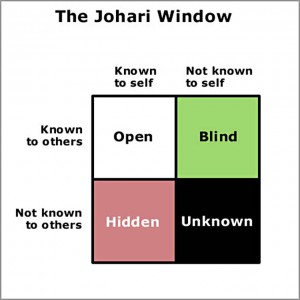 In the humanistic astrology of Dane Rudhyar and others, the Sun’s location in an individual’s astrology chart reveals the Self, the Soul, at the center of the psyche. This Self can be described as having three major components in the terminology developed by Carl Jung: the personality or persona, the Ego, and the Unconscious. Using the Johari Window, we can visualize these three components. The persona is represented by the “Open” and “Blind” panes. The “Blind” pane signifies the parts of our Ego that others see in us but about which we are unaware. The “Hidden” window includes those parts of our Ego that we recognize but do not wish them to see. In a horoscope wheel chart, the Sign and Degree of the cusp of the First House (the line between the 12th House and the 1st House, usually at nine o’clock) represents the way an individual projects to or is perceived by others: his or her “persona.”
In the humanistic astrology of Dane Rudhyar and others, the Sun’s location in an individual’s astrology chart reveals the Self, the Soul, at the center of the psyche. This Self can be described as having three major components in the terminology developed by Carl Jung: the personality or persona, the Ego, and the Unconscious. Using the Johari Window, we can visualize these three components. The persona is represented by the “Open” and “Blind” panes. The “Blind” pane signifies the parts of our Ego that others see in us but about which we are unaware. The “Hidden” window includes those parts of our Ego that we recognize but do not wish them to see. In a horoscope wheel chart, the Sign and Degree of the cusp of the First House (the line between the 12th House and the 1st House, usually at nine o’clock) represents the way an individual projects to or is perceived by others: his or her “persona.”
In a horoscope wheel chart, the Sign and Degree of the cusp of the First House represents the way an individual projects to or is perceived by others: his or her ‘persona.’
All this suggests that how a person projects himself or herself may mask the real individual, often quite dramatically. So it’s important to remember that we are partially—sometimes significantly—responsible for the opinions others have about us: we unconsciously project our own qualities into the perceptual image those around us, coloring and frequently complicating our relationships. The influence of the Sun may be masked within the persona, and often we are responsible for the mask. Consider Carl Jung’s archetypal concept of Shadow, for instance. In Jungian terms, our life experiences provide growth lessons along a path between the image we project, our Ego, and who we actually are as defined by the sign degree of our Sun.
In Jungian terms, our life experiences provide growth lessons along a path between the image we project, our Ego, and who we actually are as defined by the sign degree of our Sun.
Humanistic astrologers recognize this truth: our journey through life includes challenges that cause the persona as defined by the qualities represented in our Ascendant to join the Ego and more closely align with the Sun or Self. As Jung suggests when discussing the Shadow, this makes the journey especially difficult when it challenges the perceptions of those closest to us and can create interpersonal problems with perfect strangers. These were issues for John Steinbeck throughout his life.
As Jung suggests when discussing the Shadow, this can create interpersonal problems with perfect strangers. These were issues for John Steinbeck throughout his life.
Steinbeck’s Ascendant is at 1 degree 4 minutes Taurus, significant because it increased the likelihood of his compatibility with Ed Ricketts, who had a Taurus Sun. Given what I’ve learned about Taurus Ascendants, I suspect that Steinbeck, with a Pisces Sun, was sometimes judged by others to be more predictable than he really was. On first meeting, his personality would have attracted someone like his wife Carol, who also had a Pisces Sun. A woman of her perceptiveness would have tacitly understood her need for a partner with stability, and when they met Steinbeck’s persona could have been mistaken for that of a Taurus. Steinbeck, with a Taurus Ascendant, would offer such an illusion.
Steinbeck’s Taurus Ascendant is significant because it increased the likelihood of his compatibility with Ed Ricketts, who had a Taurus Sun.
Most importantly, John Steinbeck’s horoscope wheel reveals a significant pattern formed by the location of planets in Sign and Houses. The majority of planets in his astrology chart are in the upper left quarter, an area that is associated with objective social types. Steinbeck’s avowed goal as a writer was social: to observe others, increase understanding, and influence change—a purpose that history has proven he met beyond anyone’s expectations, including his own. For readers today, this may be the most important lesson to be learned from John Steinbeck’s astrology chart, his understanding of Carl Jung, and his collaboration with Ed Ricketts in writing Sea of Cortez, a gift from the tide pool and the stars.
The author welcomes inquiries at wstillwagon1@earthlink.net.—Ed.
Cannery Row’s Human Parade: Helpful Hints for Better Training Design
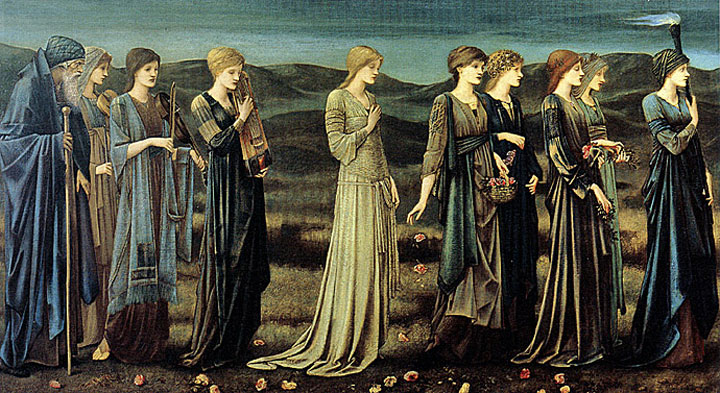 As an instructional designer in business and industry I had the responsibility for preparing employees to face critical and risky tasks—ones that demanded courage and flawless creativity. It is a fact that most risky tasks are handled alone and not by a team or committee. To meet the challenges, I had to replace the usual classroom experiences with new training methods that considered the whole work environment. My methods were built on the ideas of the psychologist Carl Jung that were applied so well by John Steinbeck in his fiction and non-fiction, including Cannery Row, Sweet Thursday, The Log From the Sea of Cortez, The Moon Is Down, and East Of Eden. What follows continues the line of inquiry in my most recent post.
As an instructional designer in business and industry I had the responsibility for preparing employees to face critical and risky tasks—ones that demanded courage and flawless creativity. It is a fact that most risky tasks are handled alone and not by a team or committee. To meet the challenges, I had to replace the usual classroom experiences with new training methods that considered the whole work environment. My methods were built on the ideas of the psychologist Carl Jung that were applied so well by John Steinbeck in his fiction and non-fiction, including Cannery Row, Sweet Thursday, The Log From the Sea of Cortez, The Moon Is Down, and East Of Eden. What follows continues the line of inquiry in my most recent post.
Like Carl Jung, John Steinbeck understood the principle well, as shown in a letter to John O’Hara, his friend and fellow writer:
“I think I believe one thing powerfully-that the only creative thing our species has is the individual lonely mind. Two people can create a child but I know of no other thing created by a group. The group ungoverned by individual thinking is a horrible destructive principle. . . . “
As a result of my study, it became very clear to me that while individuals were facing creatively demanding tasks alone, the physical and social environment in which the creative effort must be undertaken influences job-holder perception, judgment, problem-solving, and decision-making—and inevitably, success or failure.
Carl Jung, Cannery Row, and the Human-Persona Divide
In my assignments as a training program developer, I became curious about the influences of the work environment on the individual. My goal was to create a richer and more realistic learning experience. I had years of independent study of Carl Jung and was aware of his influence on John Steinbeck’s fiction and non-fiction. Both inspired my efforts and spurred my curiosity.
As a result of reading Jung and Steinbeck, I began to understand why particular types of individuals seem to gravitate to certain jobs. For example, the personality difference between the engineer- and customer service and marketing-types is typically dramatic. What did John Steinbeck have to say about this particular human-persona divide? It seemed obvious to me that the Cannery Row character Doc would not have made a successful sporting house manager like Dora, and that Mack would have been a poor replacement for Doc in the role of Caretaker for the Row. Strong characters all, but hardly interchangeable.
Delving deeply into The Log From the Sea Of Cortez—John Steinbeck’s collaboration with Ed Ricketts, the model for his Cannery Row character Doc—I was struck by the idea that a person’s social and physical environment is no more random than that of the tide pool creatures described by the authors:
“We wanted to see everything our eyes would accommodate, to think what we could, and, out of our seeing and thinking, to build some kind of structure in modeled imitation of the observed reality. We knew that what we would see and record and construct would be warped, as all knowledge patterns are warped, first, by the collective pressure and stream of our time and race, second by the thrust of our individual personalities. But knowing this, we might not fall into too many holes-we might maintain some balance between our warp and the separate thing, the external reality.”
A Cannery Row-Sweet Thursday Human-Type Continuum
A training program, physical environment has purpose, patterns, lessons, and consequences like those imposed by the surrounding tide pool environment on a biological specimen. The life in a peaceful, safe, and unchallenging tide pool may actually impede species evolution and survival. The microbes that infect us evolve and strengthen in response to antibiotics designed to kill them. Grapes from a difficult growing season often produce superior wine. Trainees who survive a practical-and stressful- learning environment may likewise perform better than others on the job.
Consider the social environment and social impact upon the denizens of Cannery Row in Sweet Thursday, John Steinbeck’s sequel to the earlier novel:
“To a casual observer Cannery Row might have seemed a series of self-contained and selfish units, each functioning alone with no reference to the others. There was little visible connection between La Ida’s, the Bear Flag, the grocery (still known as Lee Chong’s Heavenly Flower Grocery), the Palace Flop house, and Western Biological Laboratories. The fact is that each was bound by gossamer threads of steel to all the others—hurt one, and you aroused vengeance in all. Let sadness come to one, and all wept.”
Or, by contrast, the following passage from Cannery Row:
“The previous watchman was named William and he was a dark and lonesome-looking man. In the daytime when his duties were few he would grow tired of female company. Through the windows he could see Mack and the boys sitting on the pipes in the vacant lot, dangling their feet in the mallow weeds and taking the sun while they discoursed slowly and philosophically of matters of interest but of no importance. Now and then as he watched them he saw them take out a pint of Old Tennis Shoes and wiping the neck of the bottle on a sleeve, raise the pint one after another. And William began to wish he could join that good group. He walked out one day and sat on the pipe. Conversation stopped and an uneasy and hostile silence fell on the group. After a while William went disconsolately back to the Bear Flag and through the window he saw the conversation spring up again and it saddened him. He had a dark and ugly face and a mouth twisted with brooding. The next day he went again and this time he took a pint of whiskey. Mack and the boys drank the whiskey, after all they weren’t crazy, but all the talking they did was “Good luck,” and “Lookin’ at you.” After a while William went back to the Bear Flag and he watched them through the window and he heard Mack raise his voice saying, “But God damn it, I hate a pimp!” Now this was obviously untrue although William didn’t know that. Mack and the boys just didn’t like William.”
Individual Levels in John Steinbeck’s The Moon Is Down
Just as examining a biological specimen in its surrounding tide pool yields greater information than isolated examination in a laboratory, we can learn more about individuals by studying them within their physical and social environment than in solitude. Conceptual tools such as Carl Jung’s functional and attitudinal types and Jim Kent’s Gathering Place Roles (discussed previously in this series) further expand our horizon. Deeper drilling reveals why particular Jungian functional types and attitudes will gravitate naturally to specific Gathering Place roles.
As noted in the first of these blog posts, human beings range in maturity from simple, unconscious types to highly evolved individuals who are conscious about and in control of their lives. Now I would like add my observations about groups made up of members who have not achieved higher maturity:
1. If there is any social structure at all, the social body will be vertically directed by leaders who have realized how easy it is to influence the citizens to do their will, usually for selfish and evil reasons. “Tell the population anything and repeat it many times and they will believe it” (Adolf Hitler paraphrased).
2. Less-evolved citizens who have not awakened to the possibility of their unique self and self-direction and will easily surrender their freedom to father or mother figures, real or imagined, and remain unaware of the resulting personal cost.
3. Such followers do not actively direct their lives beyond providing for the basics of assuring food, shelter, and procreation.
4. They project upon external gods, including father and mother figures, and are closed to suggestions from outside the social group: all thinking has been entrusted to the mother or father figure.
5. Total leader-control is possible simply by publishing of a list of “ought-and-must” dictates.
6. The leadership will be threatened by anyone who refuses to surrender his or her freedoms. Given the usual absolute power of the leaders, it is simple to incite mass or MOB confrontation against those who threaten challenge or change, sometimes cruelly and violently.
Where individuals of higher maturity comprise the group the following can be observed:
1. The leadership unselfishly serves its citizens.
2. “Ought-and-must” dictates are almost useless to control the citizenry comprised of higher-evolved individuals.
3. The life of the citizens has more potential for happiness and completeness.
4. Within this positive and loving environment, interpersonal struggles will persist because everyone will not agree on every issue. There is a noticeable difference between interpersonal struggles within a loving social environment and the ones where there is virtual sibling-rivalry for the father or mother figure’s attention. Adolf Hitler actually encouraged such confrontation among his leadership.
5. Highly evolved individuals have learned that there is more in play in themselves than mere ego and have begun to explore and integrate newly discovered psychological territory. This is perhaps the most important step to becoming a complete individual.
6. The collective power for good often exceeds what would be anticipated from apparent resources. Unexpected strength and adaptability will come out of the positive and powerful phalanx of more mature individuals.
In The Moon Is Down, John Steinbeck portrayed a community of evolved (per my recent post, Level 3 and Level 4) men and women, dramatizing the power of such a phalanx in response to occupation by father-figure representatives of a distant and despotic leader. The Nazi spokesman advises the mayor to “think for” his people:
“’It is your duty to protect them from harm. They will be in danger if they are rebellious. We must get the coal, you see. Our leaders do not tell us how; they order us to get it. But you have your people to protect. You must make them do the work and thus keep them safe.’ Mayor Orden asked, ‘But suppose they don’t want to be safe?’ ‘Then you must think for them.’ Orden said, a little proudly, ‘My people don’t like to have others think for them. Maybe they are different from your people. I am confused, but that I am sure of.’”
With the various levels of individual evolution in mind, consider the history of freedom-loving Scotland with the citizens being served by the Stewart monarchy. Go back further, to the Britons and King Arthur—John Steinbeck’s ideal of dedication to duty and chivalry. Fast forward to the Ottoman Empire, where the rights of all religions were guaranteed by proclamation. Consider the social environment surrounding the Library at Alexandria—destroyed by Christians—where citizens of all cultures, ideals, and creeds mingled and freely shared their knowledge and wisdom.
Needs Analysis and Jung and Steinbeck’s Human Factor
In my instructional design career I was responsible for providing training in tasks as simple as completing personnel time records and as complex as monitoring and controlling complicated electric generating-station systems. As noted, my programs were also used to prepare teams of consultants to influence and support communities that were facing challenges. In many cases, my job required the analysis of complex systems and processes, human-to-system interface, and interpersonal and social issues, using Needs Analysis to define the gap between existing competency levels and those needed to do the job with greater expertise.
Needs Analysis provide the necessary information to design training models, proposals, and justification, cost-benefit, and standards. Technical and complex-process analysts normally have abundant technical and process data available for their task. But complex critical-skill competencies also include personal and interpersonal components such as individual jobholder style, strengths, weaknesses, creativity, perception, judgment, and decision-making, problem-solving, risk-management skills.
But the analyst’s intellect is as critical to the success of the process as the technical tools developed in preparation for the act of training. Yet the humanities side of the training is all too often ignored in the process. The briefest examination of technical-owner manuals shows how poorly qualified most computer programmers and engineers are to write useful guides for the non-technical user. Worse still, to an experienced instructional designer, the engineer’s boast that he has emulated the cognitive processes of the human mind in designing artificial intelligence and expert systems for human use is laughable at best.
When I awoke to the need for a more holistic critical skills-training perspective, little was available to guide me in the human elements of the equation beyond publications by psychological behaviorists such as Thomas F. Gilbert and Robert Mager. But their view was limited to statistically defined and empirically observable behavior and ignored the influence of individual will and social environment. In my opinion they were uninterested in the factors that form our uniqueness and individual creativity. To develop a more complete program I knew that a broader perspective was required, providing a bigger window from which to analyze work processes and standards in greater depth and detail.
The program developers I managed were almost exclusively specialists and technical experts inexperienced in or ignorant of the humanities. To do a more thorough job, their subject-matter expertise needed bolstering with knowledge of human factors, attributes, and cognitive functions. Failure to consider these essential elements within the context of a given task accounts for many problems, notably in military training, pilot training simulation, nuclear power plant operation, ship navigation, and other life-and-death tasks. The 1979 near- disaster at Nuclear Generating Station Number Two on Three Mile Island is a dramatic example of this danger.
Was John Steinbeck Right About Religion and Freedom?
But was John Steinbeck always right about the individual? In the forward to a later edition of A Russian Journal he was quoted: “The great change in the last 2,000 years was the Christian idea that the individual soul was very precious.” I disagree, and I think Steinbeck knew better. Historically Christianity has cruelly suppressed individual behaviors and beliefs that appeared to challenge official doctrine and church control. In this regard, it is a religion with much company in the parade of human history.
The suppression of individual freedom remains an impediment to the general improvement of the human condition. As Steinbeck showed in The Moon Is Down, the simple act of raising individual consciousness from Level 1 to Level 2 improves the quality of the collective. In East of Eden, written 10 years later, the original sin isn’t eating the apple of the tree, suggesting that Eden was incomplete without self-knowledge—the real fruit of the forbidden tree. Eve is denigrated by the religious for taking that first bite of freedom. To the contrary, I am convinced that Adam benefitted from the reported act of her original disobedience. I suspect that John Steinbeck agreed.
“It is, I think, exceedingly easy to define what ought to be understood by national honor; for that which is the best character for an individual is the best character for a nation; and wherever the latter exceeds or falls beneath the former, there is a departure from the line of true greatness.” (Thomas Paine)
This is the third in Wesley Stillwagon’s series on the application of John Steinbeck and Carl Jung’s insights in innovative corporate training program design. To be continued.
A Meeting of Minds on Cannery Row: John Steinbeck’s Phalanx, Carl Jung’s Types, and James Kent’s Gathering Place Roles
Some years ago my paper on John Steinbeck, Carl Jung, the phalanx, and the Development of Higher Management Teams was published by an online forum devoted to the life and work of the Swiss psychologist and psychiatrist Carl Jung. At the time I was developing team and organization building programs for corporations. My job required some business travel. While in California I did what other Steinbeck lovers do: I took a side trip to Monterey’s Cannery Row. What follows further develops my recent post on John Steinbeck, Carl Jung, and how their insights can be applied in business.
Fellow Pilgrims to Cannery Row Discover a Mutual Interest
Sometime before my pilgrimage to Cannery Row, I received a call from James Kent (shown below), a John Steinbeck fan who also recognized the practical value of Steinbeck’s work beyond its entertaining read. He told me that he found my phalanx paper and thoughts interesting. We agreed to meet on Cannery Row to talk in person. On a walk down the hallway of our Monterey motel, Jim mentioned his concept of Gathering Place roles and how his team uses it in their initial analysis of informal network gatherings in restaurants, barbershops, and taverns in communities facing challenges. Jim and his team discovered the true nature of public attitudes and resistance within these gatherings beneath the sanitized version frequently presented by public officials. I thought the idea was brilliant and I said so.
I also thought that the concept could be applied in team analysis and building within large organizations—and I still do. This made my connection with Jim and his ideas on Cannery Row that day a particularly fortunate synchronistic experience. If one accepts Jim’s Gathering Place concept, it seems natural to me to consider its relationship to ideas expressed in John Steinbeck’s writing about the phalanx and Carl Jung’s analysis of personal and collective unconscious, functional types, and attitudes.
Steinbeck and Ricketts’ Non-Teleological Way of Thinking
To develop a personally useful understanding of phalanx, one must employ a perspective that does not require a cause-effect relationship common to some scientific research. In other words, with this non-teleological perspective the researchers eliminate the influences of hopes, fears, and expectations in their planning and study. (Please refer to the Pygmalion effect or Rosenthal effect.) Such a perspective enables the researcher to drill through the illusions and brings the subject closer to John Steinbeck’s friend Ed Ricketts’ goal of “true things.” The perspective enables increased objectivity and reduces human subjectivity, projection, and slant. Scientific psychology research has a handicap that is not an issue in other empirical sciences, and that is the study instrument (the individual human psyche) must be used to study individual human psyches. No other science has such a threat to objectivity. As a result, a non-teleological perspective is essential to psychological study objectivity.
In The Log From the Sea Of Cortez, John Steinbeck and Ed Ricketts stated the following regarding teleological and non-teleological thinking:
What we personally conceive by the term “teleological thinking,” as exemplified by the notion about the shiftless unemployed, is most frequently associated with the evaluating of causes and effects, the purposiveness of events. This kind of thinking considers changes and cures—what “should be” in the terms of an end pattern (which is often a subjective or an anthropomorphic projection); it presumes the bettering of conditions, often, unfortunately, without achieving more than a most superficial understanding of those conditions. In their sometimes intolerant refusal to face facts as they are, teleological notions may substitute a fierce but ineffectual attempt to change conditions which are assumed to be undesirable, in place of the understanding-acceptance which would pave the way for a more sensible attempt at any change which might pave the way for a more sensible attempt at any change which might still be indicated. Non-teleological ideas derive through “is” thinking, associated with natural selection as Darwin seems to have understood it. They imply depth, fundamentalism, and clarity—seeing beyond traditional or personal projections. They consider events as outgrowths and expressions rather than as results; conscious acceptance as a desideratum, and certainly as an all-important prerequisite. Non-teleological thinking concerns itself primarily not with what should be, or could be, or might be, but rather with what actually “is”—attempting at most to answer the already sufficiently difficult questions what or how, instead of why. An interesting parallel.
The powerful, unconscious, and autonomous influence on individual perception, judgment, conclusions, problem solving, decisions, and behavior, within an objective-focused gathering, group, or MOB, is what John Steinbeck called the phalanx. The MOB objective may be unreasonable or illusory, but may cause members to participate in scape-goating or group bullying of those who simply disagree with their beliefs. I believe there are few things in this life more worthy of scholarly examination than the phalanx phenomenon. The concept is based somewhat on the collective unconscious described by Carl Jung and by other philosophical giants including Harvard Professor William James, a major influence on Jung also familiar to Steinbeck, who coined the term phalanx, clearly defined it, and applied the concept in his novels.
Carl Jung’s Types and Jim Kent’s Gathering Place Roles
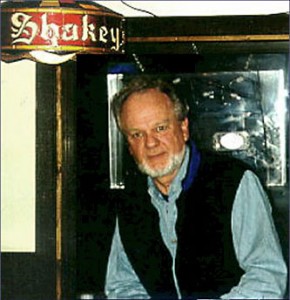 Jim Kent’s Gathering Places for friends in a network are casual happenings. (John Steinbeck in Sweet Thursday: “In the Palace Flop house a little meeting occurred—occurred, because no one called it, no one planned it, and yet everyone knew what it was about.”) Informal Gathering Place roles are casually filled without formal election or appointment. I think individual styles role players gravitate naturally to their position. While I have no supportive data for this theory, I honestly believe such research would show that particular roles would naturally be filled by specific functional types—Sensation, Thinking, Intuiting, and Feeling—and attitudes: Extraverted, and Introverted. (There will be much more about the functions, attitudes, and types in my sequel to this article.) In my opinion, for example, Ed Ricketts was an “Introverted Sensation Feeling” type and as a result would fit nicely within Jim Kent’s “Caretaker” role as he specified.
Jim Kent’s Gathering Places for friends in a network are casual happenings. (John Steinbeck in Sweet Thursday: “In the Palace Flop house a little meeting occurred—occurred, because no one called it, no one planned it, and yet everyone knew what it was about.”) Informal Gathering Place roles are casually filled without formal election or appointment. I think individual styles role players gravitate naturally to their position. While I have no supportive data for this theory, I honestly believe such research would show that particular roles would naturally be filled by specific functional types—Sensation, Thinking, Intuiting, and Feeling—and attitudes: Extraverted, and Introverted. (There will be much more about the functions, attitudes, and types in my sequel to this article.) In my opinion, for example, Ed Ricketts was an “Introverted Sensation Feeling” type and as a result would fit nicely within Jim Kent’s “Caretaker” role as he specified.
Of the Introverted Sensation Type, Carl Jung said:
If there were present a capacity and readiness for expression in any way commensurate with the strength of sensation, the irrationality of this type would be extremely evident. This is the case, for instance, when the individual is a creative artist. But, since this is the exception, it usually happens that the characteristic introverted difficulty of expression also conceals his irrationality. On the contrary, he may actually stand out by the very calmness and passivity of his demeanour, or by his rational self-control. This peculiarity, which often leads the superficial judgment astray, is really due to his unrelatedness to objects.
If we include the influence of the Feeling function as an auxiliary to his Sensation type, then we are implying a strong tendency to perceive with a lean toward the interpersonal. This is my opinion based upon what information I’ve read about Ricketts. Jim’s Gathering Place roles are readily summarized and often exemplified in Steinbeck’s fiction, including Cannery Row.
Gathering Place Roles with Examples from Cannery Row
Caretakers
Are the glue that holds the culture together.
Are routinely accessible to people of the networks when they need assistance or advice.
Give assistance or advice freely; there is no chit or payback expected.
Are invisible to outsiders and do not belong to formal groups.
Are essential to high levels of social capital in society.
Ed Ricketts was a Caretaker, as is John Steinbeck’s character, the madam Flora (Fawna).
Communicators
Move information throughout the networks.
Are generally in places where they come into contact with people from various informal networks and formal groups.
Are especially prevalent in gathering places such as coffee shops, bars, beauty shops, restaurants, etc.
Are essential for moving information quickly throughout a community when you need accuracy and word-of-mouth speed.
John Steinbeck’s strike-strategist Mac is a Communicator between networks in In Dubious Battle. In Tortilla Flat Danny is a Caretaker/Communicator; Wing Chung is a Communicator.
Storytellers
Carry the culture through their stories.
Provide a community with the culture benchmarks that are essential to understand how a community can grow and still maintain the good parts of their culture.
Understand the importance of gathering places and are often the “characters” in the gathering places.
George in Of Mice and Men is a Storyteller. Of course the character Doc is cast as a Storyteller in Cannery Row, and the whole Lab actuality functions as a gathering place where stories bring understanding, introspection, reflection, and action.
Gatekeepers
Function as a protective device for the informal systems screening out intrusive people from formal systems.
Narrow the entry to a network or community through information control.
Are often verbal people who understand both the informal and the formal.
Authenticators
Function in the area of knowledge and wisdom.
Have knowledge and wisdom from the culture and often provide cultural interpretations to technical data and information generated by formal systems. Often these individuals have one foot in the cultural context and another in a scientific context understanding both as well as how to integrate so that scientific data can be put into a local context that is usable.
The Seer in Cannery Row is an Authenticator for Doc. Former Ricketts-lab key holder Eldon Dedini operates in this capacity in relation to the real-life lab and its function. Lab gathering place regular Bruce Aris was such a person, as was Ed Ricketts.
Applying the Gathering Place Concept in Your Own Group
I’d like to add my opinion that if one were to include the Jungian concept of Psychological Type to the role definitions, it may become even a more powerful tool than it is. Still, the recognition of the concept was brilliant. Think of an informal gathering of friends. Most of us would predict the likelihood that among the group are individuals filling roles as described by Jim Kent. In any network there are individuals who complement each other and other pairs who grate on each other’s nerves but tolerate the irritation for the good of the fellowship. I believe that there are gathering place role owners who, simply because of their opposing styles, may be irritants to one other. For instance, a Gatekeeper’s style may sharply contrast with that of a Communicator. A preponderance of such interpersonal connections either way will influence the social environment AND the group’s relationship to the phalanx.
Using Carl Jung’s type concept, imagine a role filled by an Introverted Intuitive Thinking type, complete with his or her grand visions, long-term plans, flow charts, logistics, cold and impersonal logic, and another role filled by an Extraverted Sensation Feeling type with interpersonal objectives, stories of previous experiences, etc. They are opposites who can either (1) let petty differences fester to the detriment of the group’s social atmosphere or (2) acknowledge that their negative emotions come out of weaknesses that are contrasted in the persona of the other individual. When this is acknowledged, the two may personally benefit from the awakening, celebrate, and value their complementary styles. The latter possibility will add to the quality of the social atmosphere and will (1) make the group less vulnerable to the negative influences of phalanx and (2) empower the network to strength far beyond its apparent resources.
Photo of James Kent courtesy Wesley Stillwagon.
This is the second in Wesley Stillwagon’s series on the application of John Steinbeck and Carl Jung’s insights in innovative corporate training program design. To be continued.
John Steinbeck, Carl Jung, and Phalanx in Tortilla Flat
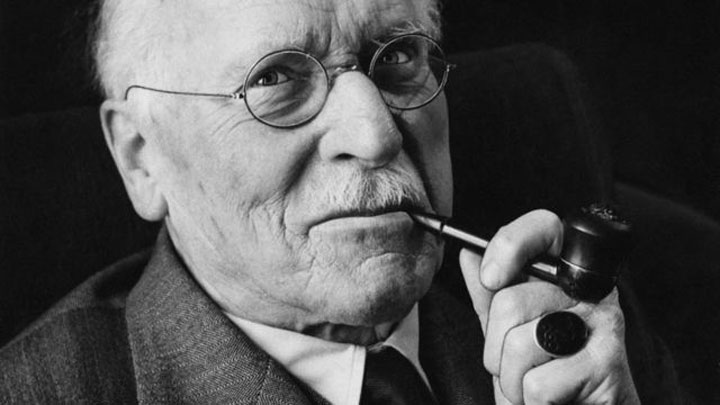 John Steinbeck was ambivalent about psychology. In 1962 he lashed out at his country’s modern “psychiatric priesthood” in Travels with Charley. But 30 years earlier he had stayed up nights discussing the psychological insights of Carl Jung, the great Swiss psychologist-psychiatrist shown here, with Ed Ricketts, Joseph Campbell, and other members of the bohemian Cannery Row circle in the Monterey of his youth. As a result, Jungian principles of a collective human unconscious, the meaning of symbols and myths, and the essential role of certain types of individuals in group behavior inform Steinbeck’s most successful fiction of the 1930s. To a God Unknown and In Dubious Battle are frequently cited examples. As I will show, the insights of Jung in advancing Steinbeck and Ricketts’ phalanx theory are equally evident in Tortilla Flat, the book that launched Steinbeck’s reputation as a promising new writer.
John Steinbeck was ambivalent about psychology. In 1962 he lashed out at his country’s modern “psychiatric priesthood” in Travels with Charley. But 30 years earlier he had stayed up nights discussing the psychological insights of Carl Jung, the great Swiss psychologist-psychiatrist shown here, with Ed Ricketts, Joseph Campbell, and other members of the bohemian Cannery Row circle in the Monterey of his youth. As a result, Jungian principles of a collective human unconscious, the meaning of symbols and myths, and the essential role of certain types of individuals in group behavior inform Steinbeck’s most successful fiction of the 1930s. To a God Unknown and In Dubious Battle are frequently cited examples. As I will show, the insights of Jung in advancing Steinbeck and Ricketts’ phalanx theory are equally evident in Tortilla Flat, the book that launched Steinbeck’s reputation as a promising new writer.
Carl Jung, John Steinbeck, and the Problem of Language
I reached this conclusion not through studying literary theory in a classroom but by reading Carl Jung and John Steinbeck and applying their insights in my three-decade career designing, developing, and leading critical skills and management training programs for corporations such as RCA, KPMG Peat Marwick, Honeywell, AT&T, Blue Cross/Blue Shield of New Jersey, and others. In business, critical skills include tasks where failure to properly perform may cause death, serious injury, or financial loss. Central to the development of cost-effective critical skills training programs in my work was assuring clearly and uniformly understood terms, concepts, and models. To do this, a good instructional designer must define terms and concepts so that training objectives and process are easily communicated and comprehended.
This is usually not too much of a problem in industries and professions that have well-defined lexicons, such as law, engineering, and accounting. It is more difficult when training enters more the ambiguous arena of consulting, marketing, management, and sales. But these activities also require clearly-understood language for personal, interpersonal, team, and group-related tasks. Naturally the field of psychology seems an appropriate place to handle individual, interpersonal, and teaming challenges that arise in the process of doing business and improving outcomes. Yet key terms and basic concepts vary greatly throughout psychology from one school of thought and practice to another. For instance, the essential term ego is defined quite differently by followers of Carl Jung and Sigmund Freud and was ignored completely by later behaviorists such as B.F. Skinner.
Because reliable sources to develop a useful lexicon for applying psychological theories outside the box of clinical psychotherapy are few—and because individual psychologists frequently employ esoteric language and the terms, concepts, and models commonly used are often misunderstood between different schools of psychology—the study and practice of psychology in its various fields and forms is almost universally looked down upon by more precise sciences as fundamentally unscientific. The language problem inherent in psychology is a major reason why empirically-minded biologists and chemists—the sciences that attracted and engaged John Steinbeck and Ed Ricketts—continue to hold psychology in low esteem.
Discovering the John Steinbeck-Carl Jung Connection
I have been a Steinbeck fan since I first read his fiction, which I found irresistibly unpretentious, down-to-earth, and clear in style and story. Who could argue with the humor and accessibility of Tortilla Flat, his earliest best seller, for example? As in Steinbeck’s later novels, the characters in Tortilla Flat are so thoroughly defined that you felt you had known them all your life.
After rereading Tortilla Flat approximately 30 years ago, I began to sense a Jungian influence in its narrative flow and structure, an observation that was confirmed when I read the biographies of John Steinbeck that started to appear in the 1980s. When I learned that the young mythologist Joseph Campbell was part of the Cannery Row scene swirling around Steinbeck’s friend Ed Ricketts In 1932, and that Campbell’s correspondence with Ricketts continued until Ricketts’ death in 1948, there was no doubt in my mind about the influence of Carl Jung on Steinbeck’s writing—including Tortilla Flat—during the years that followed. I was equally intrigued to discover that the influence of Carl Jung on John Steinbeck did not originate with Ricketts or Campbell as some have supposed. John Steinbeck was a deep reader with wide interests who took philosophy as a student at Stanford. As a result, he came to Cannery Row in the early 1930s with knowledge about modern psychology.
The Phalanx and “Breaking Through”
The unconscious influence on behavior of individuals—Steinbeck’s “human units”—within an objective focused gathering, group, or MOB that Steinbeck called the phalanx is, I believe, worthy of closer examination today. As mentioned, To a God Unknown and In Dubious Battle are frequently adduced as examples from the fiction of the 1930s. But a piece of nonfiction published by Steinbeck in 1942, Bombs Away: The Story of a Bomber Team, includes a description of the phalanx in the training and development of bomber crews by the wartime Army Air Corps, and The Log from Sea of Cortez explains the phalanx more fully than any other work of nonfiction published in Steinbeck’s lifetime.
The MOB’s objective may seem simply unreasonable or illusionary, such as group bullying or scapegoating those who disagree with the MOB’s belief or creed. But however irrational or inexplicable, it can produce horrors like the Holocaust. Given the explosion of MOB violence around the world in our time and the reported incidence of bullying in our schools, better understanding the phalanx as Steinbeck developed and used the term seems to me to be more important than ever before.
Steinbeck’s phalanx is based in part on Carl Jung’s collective unconscious, as well as on the ideas of philosophers familiar to Steinbeck from his studies at Stanford, such as those of William James—an important influence on Jung himself in my opinion. As a result of Steinbeck’s reading, discussion, and understanding of Jung, James, and others, I believe that he consciously coined the term phalanx, clearly defined it in his thinking, and applied it in his work, including Tortilla Flat.
As also mentioned, the concept is not something Steinbeck acquired from Ricketts but came to him as a result of his personal awakening to a thread connecting random notes that he kept in a cigar box beginning as early as the 1920s. When I read about the writer’s habit of jotting ideas on bits of paper in a leading John Steinbeck biography, I thought to myself, “what a great example of Jung’s Intuition!” Significantly, the connection occurred to Steinbeck during his mother’s long illness and the crisis of caring for the parent who dominated his family and his boyhood.
To use Ed Ricketts’ term, this was a “breaking through” for John Steinbeck at age 33—a life-changing epiphany or event resulting in a leap of personal growth. Practitioners of Carl Jung’s method of psychology recognize how a personal tragedy like the death of a parent can awaken the mind’s eye to a new perspective, a deeper consciousness, and greater understanding. Importantly for my point, such an awakening proportionally reduces an individual’s susceptibility to the negative influence of the phalanx, sometimes by raising his or her resistance to participation in MOB violence and destruction. A desire to break through to deeper knowledge is a defining trait of each of the fictional characters created by Steinbeck, beginning with In Dubious Battle, based on Ed Ricketts.
Levels of Adult Maturity and the Influence of the Phalanx
In developing his phalanx concept, Steinbeck articulated two key characteristics:
* A group, gathering or MOB can take on an autonomous psychology and behave in a manner that may be quite different from what would be displayed by individual members under the same circumstances.
* The psychology of the group frequently appears to be in antagonistic counterpoint to the individual psychology of its human units.
I would add a third point: The higher the development or maturity of the group’s individual members, the less the negative influence exerted by the MOB on the group’s behavior. T
The levels of this development or maturity are fourfold:
Level 1. Level 1 persons are almost completely unaware of their uniqueness as individuals. They have no ego as the term is used in the clinical sense—that is, the psychological object within which an individual defines himself or herself. Those who exist at this level lead lives that revolve around basic survival, shelter, safety, and procreation. They leave decisions on important matters up to authority figures such as a father or mother. During Jung’s research among African and North American Native tribes, tribal members told him that they leave all thinking and decision-making to their tribal chief or medicine person. They could not distinguish between their dream state and conscious state. They told Jung that they thought anyone charged with the burden of thinking was crazy. They were mainly unconscious.
Level 2. Level 2 individuals awaken to the differences between themselves and others. This is the beginning of the existence of their ego: their awakening to their uniqueness in the world or the universe. An individual at this level typically projects onto external gods and devils. As a result of their development they gradually learn to participate in their personal path, create goals, and use individual tools in dealing with life and its issues. But for the most part they are driven to self-serving aims with their newly discovered skills. They still are mainly unconscious.
Level 3. To understand my description of Level 3, we must agree on the definition of the term ego I intend: one’s conscious image of himself or herself. When we reflect upon ourselves, the image we perceive is the ego. The term is often mistakenly used to refer to an inflated ego where the self-image of an individual exceeds reality. But in truth, the ego is the focal point to which all objects of perception must relate to become conscious. Persons at Level 3 have a nearly completely developed ego and view it as their center, denying the existence of anything about themselves outside its circumference. While the Level 3 individual denies the unconscious, they are nonetheless the victim of unconscious influences in their behavior. Examples include embarrassing slips-of-the tongue or falling in love with a person who is wrong for many reasons. They may also be victims of irrational fears or hates—the Shadow, to use another term from Carl Jung, Level 3 persons are apt to become victims of group influence at the MOB phalanx, however emphatically they may deny this possibility.
Level 4. For a variety reasons, some painful, Level 4 individuals have awakened to the reality that there is more to themselves than their ego. Accompanying this realization is a curiosity about their newly revealed psychological territory. It usually doesn’t take them long to explore this uncharted terrain within themselves. Ideally, when they do so they will seek to integrate what they discover about themselves into their existing self-image and further build their ego on stronger ground. The previously unintegrated elements of Self found in their exploration likely were the source of many of the projections they suffered at earlier stages of their development on the way to Level 4 self-knowledge. Level 4 people are thus the most conscious and least vulnerable to phalanx influence. They are truly their own man or woman.
Readers may recognize the differences in persona presented by individuals at the levels I have described. These differences can be perceived through interpersonal dialogue and interaction or through observing behavior. Strong caution must be suggested to avoid pigeon holing another and then acting on that classification. Remember, we are also responsible for the persona we perceive of others and it may be very wrong. Individuals at Level 4 (Ed Ricketts, for example) often appear peaceful, content, friendly, and kind. Those at lower levels may be more easily influenced by fear, hatred, and ignorance. The fiction of John Steinbeck, who I believe intuited this truth about humans, offers unforgettable examples of people at every level of evolution.
The Phalanx in Tortilla Flat
In Tortilla Flat, I believe that phalanx can first be observed in action among Steinbeck’s paisanos as verbalized by the character Pilon, who expresses the group’s feeling that Danny, the “group caretaker,” has abandoned them. Characters like Danny—and later Doc and Fauna in Cannery Row—play the essential group-caretaker role ably articulated and applied in his work as an international management consultant by my friend James Kent, a Steinbeck lover of profound learning and understanding.
Pilon thinks that Danny is spending too much time with Sweets Ramiriz—the grateful recipient of the gift of a vacuum cleaner she can’t use—with the result that the group feels abandoned by their leader: “At first his friends ignored his absence, for it is the right of every man to have these little affairs. But as the weeks went on, and as a rather violent domestic life began to make Danny listless and pale, his friends became convinced that Sweets’ gratitude for the sweeping-machine was not to Danny’s best physical interests.”
The verbalized concern for Danny’s physical health is a rationalization—a banner-call to action—although its actual value-driven inspiration is jealousy about a relationship that has taken Danny away from the group. This distinction is important. In judging group or team behavior in business, logical rationalizations and value-judgments are significant factors in analyzing and predicting group or team actions; since they are functionally different, they require different responses. The distinction is revealed in Steinbeck’s description of the group’s decision to do something about the situation that confronts them: “Wherefore the friends, in despair, organized a group, formed for and dedicated to [Sweets’] destruction.”
As dramatized in John Steinbeck’s Tortilla Flat, the phalanx is an unconscious complex within a group drawn together with a commonly-held objective by forces from within the collective unconscious. But the attempt to effectively influence the illusionary driving forces of a MOB or community—a common response by authority to such conditions around the world—remains, in practice, a mistake. Targeting the consciously stated objective rather than the unconscious motivation of the group wastes time, resources, and—when force is involved— human lives. Steinbeck learned about the collective unconscious from Carl Jung. We have much to learn about group behavior from John Steinbeck, starting with Tortilla Flat.
This is the first in Wesley Stillwagon’s series on the application of John Steinbeck and Carl Jung’s insights in innovative corporate training program design. To be continued.
